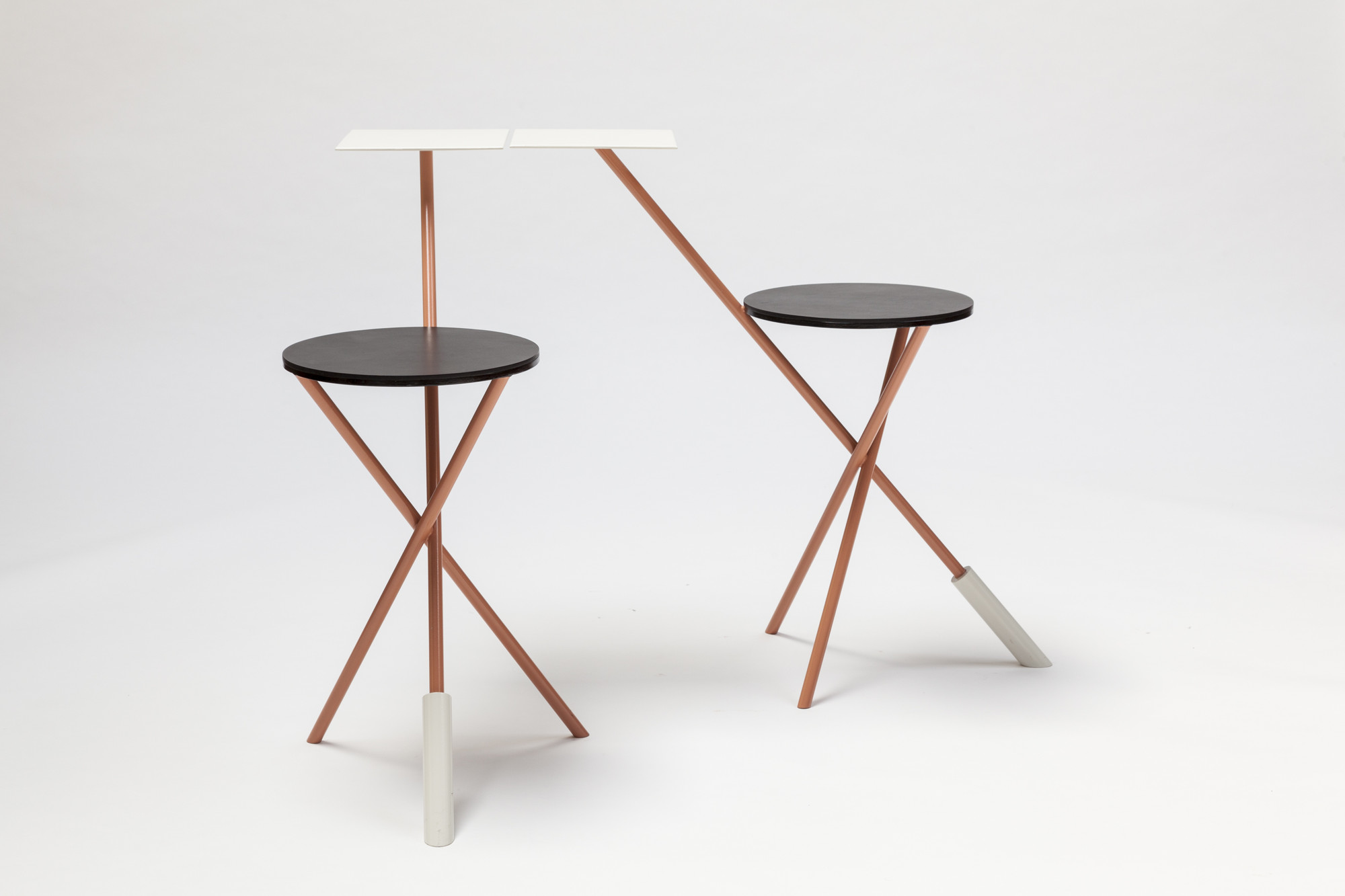
The Brussels-based design initiative MANIERA invites emerging architects to design series of limited edition furniture. This April, their first show opened with works by the Belgian architects OFFICE KERSTEN GEERS DAVID VAN SEVEREN and the Dutch artist and architect Anne Holptrop. The objects are on view in the loft-like living space of Kwinten Lavigne and Amaryllis Jacobs, the couple who founded MANIERA. Since both have a background in the art world, it’s not surprising that the design objects shown at MANIERA are more than just furniture, but rather a deliberate search for collisions between the realms of architecture, design and art.

The six sublime pieces by Anne Holtrop are compelling tri-dimensional compositions made out of carefully selected pieces of natural stone. As the artist explains, the pieces are based on the collection of agate, jasper, and onyx stones amassed by the French philosopher and sociologist Roger Caillois and pictured in his book The Writing of Stones. A closer examination of Holtrop’s pieces, however, reveals that the fragments are actually precisely hand-painted sheets of MDF. An ancient trompe l’oeil technique, produced by a specialized stone and marble painter from a traditional Belgian company called Institut Supérieur de Peinture Van der Kelen-Logelain (since 1882), creates a faux marble effect on the irregular wooden tableaus. Topped off with several layers of hard varnish, these capricious fragments of MDF become astonishing simulacra. The work by Anne Holtrop is a true tour-de-force: a showcase of intellectual references (Caillois’ stones) and technical qualities (the faux-marble effects) ‘a la bella maniera’ that defies traditional notions of industrial design, composition and order.

The table prototypes 1, 2 and 3 by OFFICE KGDVS are also a tour-de-force, but in a quite more literal sense. They directly talk about forces, gravity, spans and structural engineering. The 3 modules designed in close collaboration with engineer Arthur De Roover are composed out of polyester, aluminium and steel. Their specific material qualities and structural properties give the tables their final dimensions.

The smallest table is made out of 5 by 5 cm L-profiles in extruded polyester, a standard product that is most commonly used in the pharmaceutical industry or laboratories. The result is a square table with a span of 100 cm. The aluminium and steel versions are made out of the same 5 by 5 cm L-profiles, spanning the former 185 cm, while the steel table reaches a span of 260 cm.
The relentless radicalism of OFFICE KGDVS’ architectural designs is – just as the tables- an expression of their belief in a ‘literal’ architecture that escapes issues of programmatic organization and cultural provocations by resolving the bare essence of the design: the position of the object on the site, a constructive system, a bay-width, a room size. Their design for the Villa in Ordos (Inner Mongolia, China), the House in Buggenhout, the VOKA Office Building, the XPO trade fair complex and the Computer shop in Tielt (all in Belgium) all exemplify this no-frills attitude.

The fourth prototype designed by OFFICE KGDVS is the Solo Chair. About six months ago Archdaily published an article on the SOLO HOUSES, a project led by a visionary French developer, Christian Bourdais, who has selected eight architectural firms to design vacation houses on a 50-hectare nature reserve about two hours south of Barcelona. OFFICE KGDVS is one of the invited firms, and the chair they designed for MANIERA is named after their project for this house, since it similarly combines a circle and a circumscribed square into a new constellation.

The architects describe the chair as ‘a frozen version of the legendary walking-stick chair (around 1866) as designed by the Austrian Thonet.’ The resulting object consists of a circular seating area above which a small square table seems to float weightlessly in the air. To balance the weight of this individual table (and the objects it might carry) a steel stabilizer is attached to the lower part of the leg, resulting in a dynamic composition.

It is in this last prototype that we can see the shifting attentions of OFFICE KGDVS. While their initial designs were always strictly limited to the bare essentials, there seems to be a conscious desire to allow a certain degree of sculpture and formal presence in their more recent work. The colourful staircases in the VOKA Office building, the mannerist detailing in the Shore House and the playful windows in their soon-to-be-completed Agricultural School seem to indicate that parallel tracks are being examined, towards an architecture that combines the severe radicalism of Mies with the openness of James Stirling.
More than just a showcase of design furniture, the exhibitions at MANIERA give us an excuse to examine the personal language and writing of the invited architects. For those in Brussels, this first double exhibition will be open until June 14. The prototypes are permanently on display in the apartment of the founders, Amaryllis Jacobs & Kwinten Lavigne, and can be viewed by appointment.


























